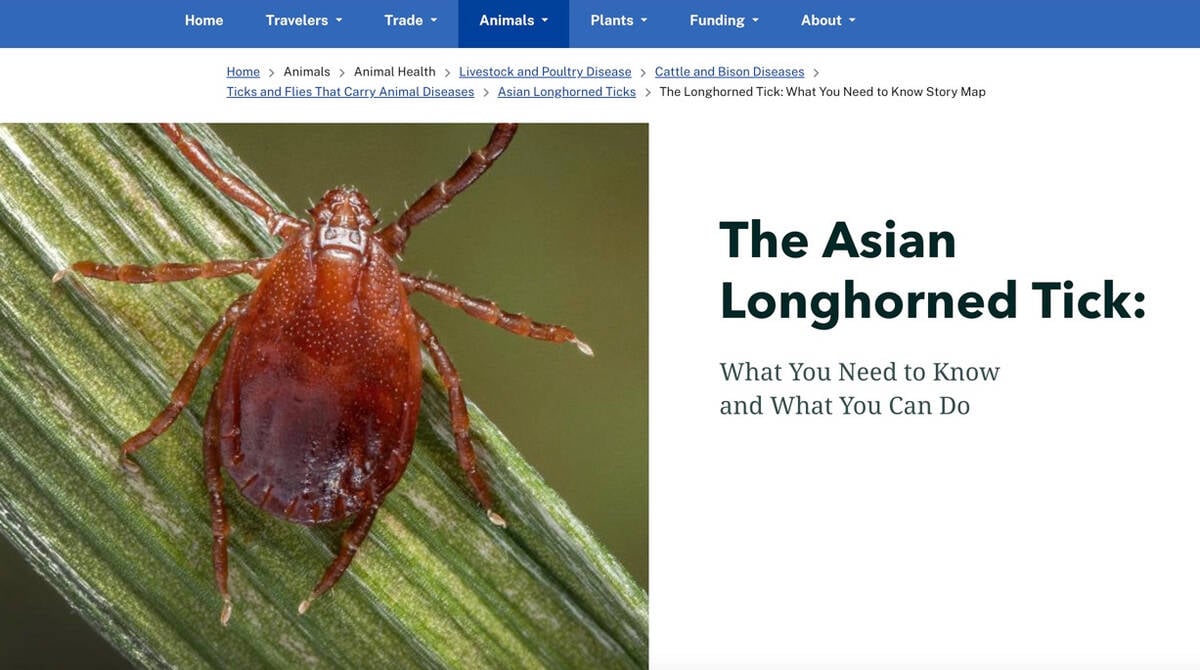When Saskatchewan beef producer Eugene Embree calculated his share of a billion dollar BSE support program, he soon realized he was entitled to less than $1,000.
The euphoria of prime minister Paul Martin’s announcement to bail out livestock producers hurt in the BSE crisis was soon tempered with reality as livestock producers counted their inventory and did some math.
Embree sold most of his calves last November so this package is barely enough to cover additional bills on his farm at Goodsoil, Sask., where he raises about 100 cows.
Read Also

New World screwworm not seen as trade threat
Canadian cattle producers shouldn’t be worried about the New World screwworm, which has become a massive concern for ranchers in Mexico and is threatening the southern United States
“They should have paid the money on the cow. If you produced a calf last year, you should be eligible,” he said.
“When the government makes a program like this, they should make sure the producers get it, not the feedlots,” he said.
Producers across the country are likely to see a smaller than expected benefit, said David Borth of the British Columbia Cattlemen’s Association.
“Those who sold their calves before Dec. 23 will see no benefit,” he said.
The federal government made $680 million available for transition payments to owners of all young ruminants on farm after Dec. 23, and another $250 million for the Canadian Farm Income Program. After submitting applications, producers receive a preliminary payment of 70 percent with a final payment later once herd inventories are registered.
Many people are still waiting for money from other programs such as the mature animal program announced at the end of last year, said Borth.
Other livestock groups are also short of cash and are struggling to qualify for recovery programs offered.
Those forced to sell lambs earlier may lose out, said Maureen Duffy, manager of the Alberta Sheep and Wool Commission.
The sheep and goat industries are eligible for $16 per head, with western producers eligible for about $500,000.
“It’s the luck of the draw. If you happened to have kept a lot of replacement ewe lambs you probably would have fared OK, but if you decided to sell, it was not the best program for the typical flock producer,” she said.
“It’s not going to make anybody rich, but anyone following the federal and provincial programs are keeping their heads about water,” she said.
For bison producers, this program has offered more than previous government plans, said Len Ross, president of the Alberta Bison Association.
When the program was announced, intact male ruminants over one year of age were disqualified, but the Canadian bison association lobbied for a change because bison are not castrated.
Therefore, all intact males and females on farms and under 36 months qualify, said Linda Sautner of the Alberta association.
“It’s starting to give people some hope because many people held onto their 2002 and 2003 calves hoping for a market rebound,” she said.
Two years ago a market collapse saw meat animals going for 10 cents a lb. so people retained calves rather than accept the lower price.
The BSE embargo on bison has been difficult for Canadians because 50 percent of the live animals and meat was exported to the U.S. Those involved with a North Dakota slaughter plant were especially hurt because there was not enough domestic kill capacity.
“A lot of our decisions were made for us,” said Sautner.















